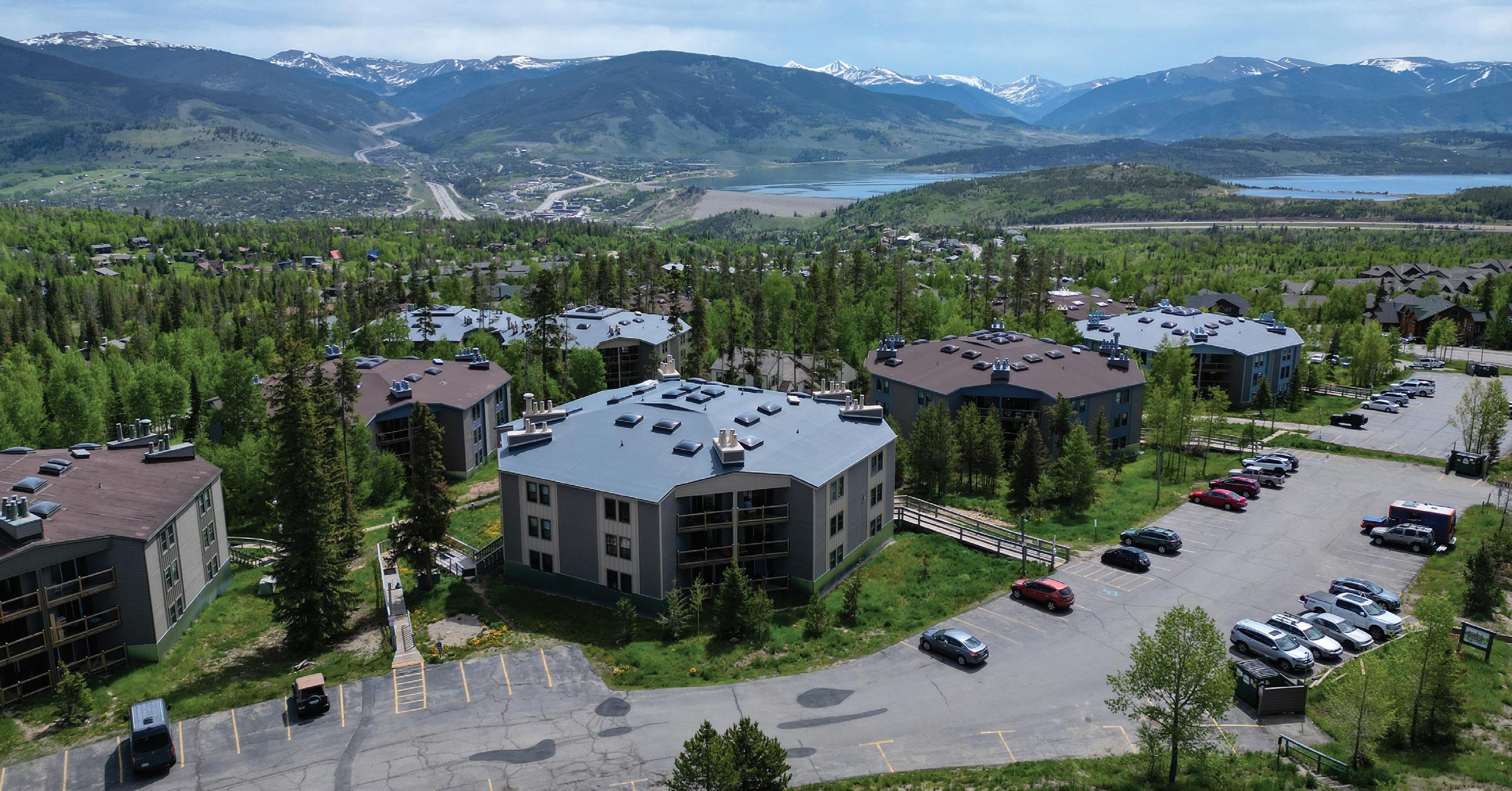Summit Colorado Second Quarter 2023 Market Report
 Report Written By: Elliot F. Eisenberg, Ph.D.
Report Written By: Elliot F. Eisenberg, Ph.D.
Source: Summit Multiple Listing Service
PHOTO: LUCAS LUDWIG
 Report Written By: Elliot F. Eisenberg, Ph.D.
Report Written By: Elliot F. Eisenberg, Ph.D.
Source: Summit Multiple Listing Service
PHOTO: LUCAS LUDWIG By: Elliot F. Eisenberg, Ph.D.
By: Elliot F. Eisenberg, Ph.D.
While many economists have been on recession watch for quite a while, the most recent upward adjustment of 23Q1 growth from 1.3% to 2% indicates that the U.S. economy, while not stellar, is most certainly very resilient. The most recent estimates for 23Q2 growth are around 2%. The much-anticipated onset of the recession has been slowed by a number of factors, the most important of which has been the excess savings amassed during Covid, which has allowed households to keep spending despite inflation and, for many families, declines in real income. In addition, there continues to be virtually unending pent-up demand for services. Households that were unable to travel and enjoy other services during the pandemic have been and continue to spend freely. A fitting example of this phenomenon is the high cost of attending live music and other events, with tickets in the hundreds to thousands of dollars. Similarly, hotel prices remain remarkably high, as do airline tickets, all because of continuing strong demand. A third reason the economy is outperforming expectations is the improving automobile sector. While new car sales plummeted in 2021 and 2022 due to a semiconductor shortage, now that supply chains have improved, auto sales are picking up quite profoundly, which is surprising given high and rising interest rates, yet another Covid-induced anomaly. There is also the incremental impact of the recent federal spending bills, including the Bipartisan Infrastructure Bill, the Inflation Reduction Act, and the Chips Bill. These already have and will continue to encourage a tremendous amount of spending and investment despite rising interest rates.
Driven by all the above and despite some weakening in 23Q2, job creation has been well above pre-pandemic levels. Some sectors, such as education and leisure/hospitality, are simply struggling to get employment back to pre-Covid levels, while in other areas, such as healthcare, although employment is back to pre-pandemic levels, it is still well below trend. While most labor economists believe that wage growth has peaked, an increasing number of employees seem to be convinced that the labor market will remain tight and that meaningful wage increases are still in their future, and they are spending accordingly. Finally, because hiring has been so difficult for so long, some employers are still hiring or postponing layoffs, even if they are currently overstaffed.
Regarding inflation, while it has fallen dramatically, from as high as 9.1% in mid-2022 to around 3% now, this decline has been the easiest part of the inflation puzzle to fix, and the remainder will be much tougher. The reduction in inflation so far has been primarily the result of declining energy prices and related transportation prices, accompanied by a decline in the price of goods as supply chains recovered and demand declined, and, finally, slowing food inflation. Over the last few months, we have seen declining rents and falling used car prices, and those should start being reflected in inflation data in the next few months. However, just as the increase in these areas was almost entirely pandemic-induced, so too have been the declines as Covid impacts fade. Unfortunately, it is the remaining inflationary pressures that are not Covid-related that the Fed must now battle and getting inflation down to 2% will continue to be a struggle.
Most of the key measures of inflation that the Fed looks at are all in the 5% range, and while they will fall over the rest of the year, the challenge of bringing them down to 2% will be difficult, and the Fed has made it very clear that they will not increase their inflation target above 2%. Other central bankers, with the exceptions of Japan and China, are similarly keeping the pressure on interest rates to quell inflation.
Historically, interest rate hikes of this magnitude have, more than three-quarters of the time, led to recessions, and when they did not, it has been luck that has intervened. Moreover, the yield curve has been highly inverted for over a year and the last eight times it has inverted dating back to 1970, there has been a recession. In terms of the scope of the probable upcoming recession, it should be similar in magnitude and duration to the recessions of 1970, 1990, and 2000; it will be a ‘garden-variety’ recession, not necessarily deep or painful, unlike the Housing Bust of 2008-2009 or the Double-Dip recession of 1980-1982.
“...inflation, while it has fallen dramatically, from as high as 9.1% in mid-2022 to around 3% now, this decline has been the easiest part of the inflation puzzle to fix, and the remainder will be much tougher... ”
The national housing market remains very constrained in terms of housing supply, and that has continued to prop up home prices despite high and rising interest rates. Although it depends upon how measured, year-over-year home prices are mostly stable, showing that this remains a very strong market and is nothing like the Housing Bust when home prices plummeted amidst a surplus of inventory.
In this cycle, despite rapid and steep interest rate increases, prices have barely budged because of the lack of inventory. While many experts predicted that home prices would decline by much more than they have, now that seasonally adjusted year-over-year prices are starting to rise, it is likely that the worst is behind us.

The other surprise in the national housing market is that new single-family home construction is picking up despite high interest rates as builders try to fill the missing inventory gap.
Despite some predictions of a Fed pause or pivot toward lower rates in the near future, it is virtually assured that we will see at least one, and perhaps two quarter-point rate hikes this year, and that the Fed will leave rates at that terminal high rate unless and until we enter a recession or we see a pervasive decline in core inflation, and odds are that will happen no earlier than 2024.

Unemployment in Colorado is 2.8% as of 05/23, down just slightly from last year after hitting a peak of 11.6% in 05/20 (for comparison, the pre-pandemic rate was 2.8%). Statewide continuing claims for unemployment hit a high of 265,499 for the week ended 5/16/20 (compared to a pre-pandemic level of 20,735) and are now at 18,807 for the week ended 07/01/23. In Pitkin County, the unemployment rate has been declining and the May unemployment rate was 4.9%, a year ago, it was 4.5%, and for comparison, pre-Covid in 05/19, it was 5.8%.
Labor markets throughout the country continue to be surprisingly strong, and Colorado is no exception, although recent data suggests a slightly slowing job market nationwide and locally.

Still, the overall labor market remains solid, and this unexpected resilience is causing recessionary expectations to be pushed further forward. The chances for the proverbial “soft landing” are rising, and with some luck on the inflation front, may be achieved.
Statewide, the June 2023 (latest data available) median price of a single-family home of $583,125 was 1.1% lower than June 2022, while the year-over-year average price was nearly flat at $725,408.
In the condo/townhome market, the year-over-year median price declined 2.8% to $418,170, and the average price decreased a meaningful 8.0% to $509,421. Through June, closed sales across the state are down 23.6%, while new listings have declined 21.3%. There were 17,376 active listings statewide at the end of June, down 8.1% compared to June 2022, representing a 2.3 month’s supply of inventory. Across the state, the percentage of list price received at sale fell to 99.7% (down from 102.1% at the end of June 2022), and days-on-market has increased to 37 days, up from 23 days last year.











